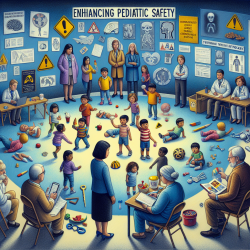Understanding the Allure of Neuroscience in Explanations
As practitioners dedicated to improving outcomes for children, it's essential to understand how explanatory preferences can influence our work. A recent study, "People’s Explanatory Preferences for Scientific Phenomena," sheds light on why neuroscience explanations often hold a special allure, even when they may not be entirely relevant. This blog will explore the study's findings and discuss how they can enhance your practice.
The Seductive Allure of Neuroscience
The study reveals a fascinating trend: people tend to prefer explanations of psychological phenomena that include neuroscience information, even when this information is irrelevant. This preference is known as the "seductive allure" of neuroscience. The research involved 82 participants who were asked to choose appropriate methods for investigating topics across six scientific fields. The findings suggest a general preference for methods that either match the field of investigation or come from the immediately more reductive field.
Implications for Practitioners
For practitioners, understanding this preference can be crucial in how we communicate scientific information to parents, educators, and other stakeholders. Here are some practical ways to apply these insights:
- Communicate Effectively: When explaining psychological phenomena, consider incorporating neuroscience information to enhance understanding and engagement, but ensure it's relevant and adds value.
- Educate Stakeholders: Help stakeholders understand the limitations of reductive explanations and the importance of context-specific information.
- Encourage Critical Thinking: Foster an environment where questioning and critical evaluation of explanations are encouraged, helping stakeholders differentiate between relevant and irrelevant information.
Encouraging Further Research
The study's findings also encourage practitioners to engage in further research. By exploring how explanatory preferences affect decision-making in educational and therapeutic settings, we can develop more effective communication strategies that resonate with our audience.
Conclusion
Understanding the allure of neuroscience in explanations can significantly impact how we communicate and make decisions in our practice. By incorporating relevant neuroscience information and encouraging critical evaluation, we can enhance our communication and create better outcomes for children.
To read the original research paper, please follow this link: People’s explanatory preferences for scientific phenomena.










